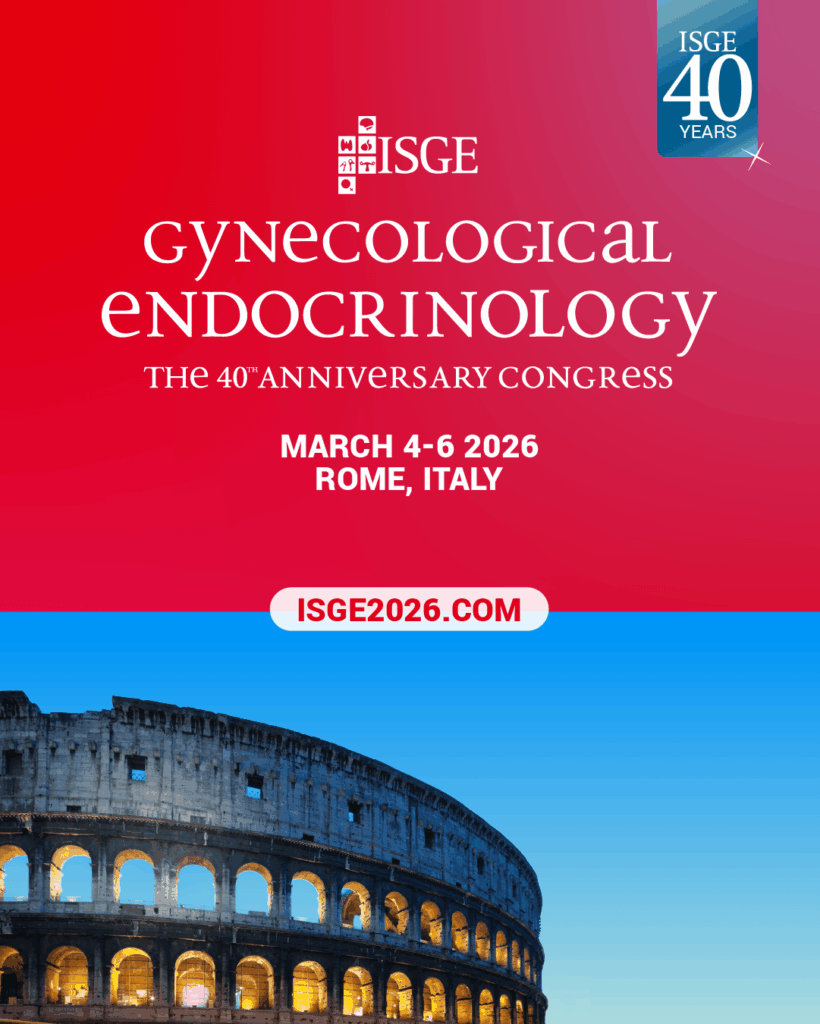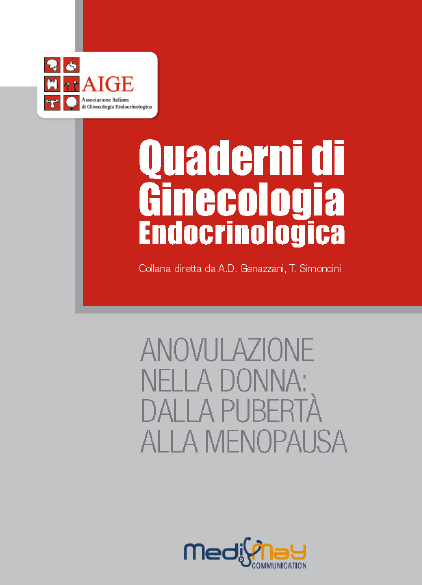-
M L Hendriks, T König, R S Soleman, T Korsen, R Schats, P G A Hompes,R Homburg, C B Lambalk
Influence of ovarian manipulation on reproductive endocrinology in polycystic ovarian syndrome and regularly cycling women
Eur J Endocrinol 169: 503-510, 2013
Abstract
Objective Little is known about the function of the ovarian neuronal network in humans. In many species, copulation influences endocrinology through this network. As a first step, the possible influence of ovarian mechanical manipulation on pituitary and ovarian hormones was evaluated in polycystic ovarian syndrome (PCOS) and regularly cycling women.
Design Prospective case–control study (2008–2010).
Methods Ten PCOS women (Rotterdam criteria) undergoing ovulation induction with recombinant-FSH and ten normal ovulatory controls were included in an academic fertility clinic. In the late follicular phase blood was drawn every 10 min for 6 h. After 3 h the ovaries were mechanically manipulated by moving a transvaginal ultrasound probe firmly over each ovary ten times. Main outcome measures were LH and FSH pulsatility and ovarian hormones before and after ovarian manipulation.
Results All PCOS patients showed an LH decline after the ovarian manipulation (before 13.0 U/l and after 10.4 U/l, P<0.01), probably based on a combination of a longer LH pulse interval and smaller amplitude (P=0.07). The controls showed no LH change (before 9.6 U/l and after 9.3 U/l, P=0.67). None of the ovarian hormones (estradiol, progesterone, anti-Müllerian hormone, inhibin B, androstenedione and testosterone) changed in either group.
Conclusions Ovarian mechanical manipulation lowers LH secretion immediately and typically only in preovulatory PCOS patients. The immediate LH change after the ovarian manipulation without any accompanying ovarian hormonal changes point to nonhormonal communication from the ovaries to the pituitary. A neuronal pathway from the ovaries communicating to the hypothalamic–pituitary system is the most reasonable explanation.
-
Felicia Yarde, Marlies Voorhuis, Madeleine Dólleman, Erik A.H. Knauff, Marinus J.C. Eijkemans, Frank J.M. Broekmans
Antimullerian hormone as predictor of reproductive outcome in subfertile women with elevated basal follicle-stimulating hormone levels: a follow-up study
Fertil Steril 100:831–8, 2013
Abstract
Objective: To investigate the role of serum antimullerian hormone (AMH) as a predictor of live birth and reproductive stage in sub-fertile women with elevated basal FSH levels.
Design: A prospective observational cohort study conducted between February 2005 and June 2009.
Setting: Tertiary fertility center.
Patient(s): Subfertile women with [1] a regular menstrual cycle (mean cycle length 25–35 days); [2] basal FSH concentrations >12.3 IU/L; and [3] younger than 40 years (n = 96).
Intervention(s): None.
Main Outcome Measure(s): Live birth and reproductive stage according to the Stages of Reproductive Aging Workshop.
Result(s): A cumulative live birth rate of 63.5% was observed during a median follow-up of 3.3 years (n = 85). The AMH level was significantly associated with live birth. There was evidence of a nonlinear prediction pattern, with an increase in chances of live birth until an AMH level of 1 mg/L. Other ovarian reserve tests and chronological age appeared of limited value in predicting live birth. In addition, AMH was significantly associated with the timing of reproductive stages (n = 68) (i.e., the occurrence of menopausal transition or menopause during follow-up).
Conclusion(s): The present findings suggest applicability of AMH determination as a marker for actual fertility in subfertile women with elevated basal FSH levels.
-
Lixia Wu, Qianyu Wu, Lan Liu
Oral contraceptive pills for endometriosis after conservative surgery: a systematic review and meta-analysis
Gynecol Endocrinol, 2013; 29(10): 883–890
Abstract
To assess the effects of oral contraceptive pills (OCPs) for endometriosis in women after conservative surgery, we performed a search of PubMed, Embase, ISI Web of Science, Cochrane Library, Scidirect, Chinese VIP, CNKI and WANGFANG database. Randomized controlled trials (RCTs) of OCPs in postoperative medical therapy for endometriosis were collected. Articles published as of January 2013 with no language restriction were identified using defined keywords, and 15 studies comprising 1850 patients were included. There was a significantly higher rate of total endometriosis remission [OR=2.55, 95% CI (1.68, 3.86), p<0.00001] and a lower rate of recurrence [OR=0.31, 95% CI (0.22, 0.45), p<0.00001] in the OCPs group compared with surgery alone. There appears to be no statistical difference in pregnancy rates between the OCPs group as compared with surgery alone or other hormonal drug treatments in infertility patients. As for the rate of recurrence and complete remission, there were no statistical differences among OCPs and gestrinone, mifepristone or GnRH-a groups. However, OCPs users had less side effects that were more mild as compared with patients using other hormonal treatments.
-
Nathalie Chabbert-Buffet, Jan Gerris, Christian Jamin, Stefano Lello, Inaki Lete, Paloma Lobo, Rossella E. Nappi, Axelle Pintiaux
Toward a new concept of ‘‘natural balance’’ in oral estroprogestin contraception
Gynecol Endocrinol, 2013; 29: 891–896
Abstract
The Pill has undergone many changes since its first appearance some 50 years ago. Key developments included the reduction of ethinylestradiol doses and the synthesis of new progestins in order to increase safety, compliance and efficiency. Low-dose combined oral contraceptives (COCs) are currently the preferred option for millions of women. Due to this widespread use, it has been argued that the safety of COCs should be even better, raising the threshold for excellence. Yet in spite of major improvements, there is still an associated risk of venous thromboembolism (VTE). The next step in COCs’ evolution should take total estrogenicity and hepatic estro-androgenic balance into account. The focus on the estrogen component – which has not changed in 50 years – has yielded a new class of natural estrogen pills. Following the introduction of a first quadriphasic pill, a monophasic estradiol pill based on the concept of ‘‘natural balance’’ was subsequently made available. These recent achievements could represent a step forward in the evolution of COCs and pave the way for better safety.
-
Dimitrios Panidis, Konstantinos Tziomalos, Djuro Macut, Eleni A. Kandaraki, Elena A. Tsourdi,Efstathios Papadakis, Ilias Katsikis
Age- and body mass index-related differences in the prevalence of metabolic syndrome in women with polycystic ovary syndrome
Gynecol Endocrinol, 2013; 29: 926–930
Abstract
Aim: To compare the prevalence of metabolic syndrome (MetS) between women with polycystic ovary syndrome (PCOS) and controls across different age (<20, 21–30 and 31–39 years old) and body mass index (BMI) (normal weight, overweight and obese) groups.
Methods: We studied 1223 women with PCOS and 277 BMI-matched controls. The prevalence
of MetS in women with PCOS and controls was estimated according to four different MetS definitions.
Results: In subjects <20 and 21–30 years old, the prevalence of MetS did not differ between women with PCOS and controls regardless of the MetS definition, even though women with PCOS were more obese than controls in the <20 years old group. In subjects 31–39 years old,the prevalence of MetS was higher in women with PCOS than in controls but the former were more obese than controls. The prevalence of MetS did not differ significantly between women with PCOS and controls in any of the BMI groups (normal weight, overweight or obese) regardless of the MetS definition.
Conclusion: The prevalence of Mets appears to be primarily determined by obesity and age whereas PCOS per se appears to be a less important contributing factor.
-
M. Borg, S. Brincat, G. Camilleri, P. Schembri-Wismayer, M. Brincat, J. Calleja-Agius
The role of cytokines in skin aging
CLIMACTERIC 2013;16:514–521
Abstract
Cutaneous aging is one of the major noticeable menopausal complications that most women want to fight in their quest for an eternally youthful skin appearance. It may contribute to some maladies that occur in aging which, despite not being life-threatening, affect the well-being, psychological state and quality of life of aged women. Skin aging is mainly affected by three factors: chronological aging, decreased levels of estrogen after menopause, and environmental factors. Aged skin is characterized by a decrease in collagen content and skin thickness which result in dry, wrinkled skin that is easily bruised and takes a longer time to heal. Cytokines play a crucial role in the manifestation of these features of old skin. The pro-infl ammatory cytokine tumor necrosis factor-alpha inhibits collagen synthesis and enhances collagen degradation by increasing the production of MMP-9. It also lowers the skin immunity and thus increases the risk of cutaneous infections in old age. Deranged levels of several interleukins and interferons also affect the aging process. The high level of CCN1 protein in aged skin gives dermal fi broblasts an ‘ age-associated secretory phenotype ’ that causes abnormal homeostasis of skin collagen and leads to the loss of the function and integrity of skin. Further research is required especially to establish the role of cytokines in the treatment of cutaneous aging.
-
Robert L. Rosenfield
Adolescent Anovulation: Maturational Mechanisms and Implications
J Clin Endocrinol Metab 98: 3572–3583, 2013
Abstract
Context: Adolescents are at high risk for menstrual dysfunction. The diagnosis of anovulatory
disorders that may have long-term health consequences is too often delayed.
Evidence Acquisition: A review of the literature in English was conducted, and data were summarized and integrated from the author’s perspective.
Main Findings:Normal adolescent anovulation causes onlyminormenstrual cycle irregularity:most cycles range from 21– 45 days, even in the first postmenarcheal year, 90% by the fourth year. Approximately half of symptomatic menstrual irregularity is due to neuroendocrine immaturity, and half is associated with increased androgen levels. The former is manifest as aluteal or short/deficient luteal phase cycles and usually resolves spontaneously. The latter seems related to polycystic ovary syndrome because adolescent androgen levels are associated with adult androgens and ovulatory dysfunction, but data are sparse. Obesity causes hyperandrogenemia and, via unclear mechanisms, seems to suppress LH;itmaymimic polycystic ovary syndrome. The role of pubertalinsulin resistancein physiological adolescent anovulation is unclear. High-sensitivity gonadotropin and steroid assays, the latter by specialty laboratories, are necessary for accurate diagnosis of pubertal disorders. Polycystic ovaries are a normal ultrasonographic finding in young women and are associated with nearly 2-fold increased anti-Müllerian hormone levels. Oral contraceptives are generally the first-line treatment for ongoing menstrual dysfunction, and the effects of treatment are similar among preparations.
Conclusions: Menstrual cycle duration persistently outside 21– 45 days in adolescents is unusual, and persistence > 1 year suggests that disordered hypothalamic-pituitary-gonadal function be considered. Research is needed on the mechanisms and prognosis of adolescent anovulation
-
Mohd Ashraf Ganie, Madan Lal Khurana, Sobia Nisar, Parvaiz Ahmed Shah, Zaffar Amin Shah, Bindu Kulshrestha, Nandita Gupta, Mohd Afzal Zargar, Tariq Ahmed Wani, Syed Mudasir, Farooq Ahmed Mir, and Shahnaz Taing
Improved Efficacy of Low-Dose Spironolactone and Metformin Combination Than Either Drug Alone in the Management of Women With Polycystic Ovary Syndrome (PCOS): A Six-Month, Open-Label Randomized Study
J Clin Endocrinol Metab 98: 3599 –3607, 2013
Abstract
Context: To improve the treatment outcomes in women with polycystic ovary syndrome (PCOS), various drugs like glitazones, oral contraceptive pills, or antiandrogens have been combined with metformin.
Objective: The aim of the study was to compare the efficacy of the combination of low-dose
spironolactone and metformin with either drug alone in the management of women with PCOS.
Design and Setting:The present study was an open-label, randomized study conducted at a tertiary care referral center.
Patients and Intervention: Of 204 women who met the 2006 Androgen Excess-PCOS criteria for PCOS, 198 were randomized into 3 equal groups to receive metformin (1000 mg/d), low-dose spironolactone (50 mg/d), or a combination of both drugs for a period of 6 months. A total of 169 subjects (n = 56 metformin, 51 spironolactone, 62 combination) completed the study.
Main OutcomeMeasures:Menstrual cycle pattern, Ferriman-Gallwey score, body mass index (BMI), waist-hip ratio, blood pressure, LH, FSH, total T, glucose and insulin sensitivity indices were measured at baseline (0 mo) and 3 and 6 months after the intervention. Recording of adverse events and drug compliance was assessed at each of the visits.
Results: The 3 groups had comparable mean age and BMI at baseline. By 6 months, menstrual cycles/y increased, whereas Ferriman-Gallwey score, serum total T, and area under the curveglucose and -insulin decreased significantly (P < .05) in the combination group as compared to either drug alone. There was no significant change in body weight, BMI, waist-hip ratio, and blood pressure in any of the 3 groups. The combination group had better compliance than either drug alone, and the adverse event rate was not higher.
Conclusion:The combination of low-dose spironolactone with metformin seems superior to either drug alone in terms of clinical benefits and compliance in women with PCOS.
-
Samantha Hocking, Dorit Samocha-Bonet, Kerry-Lee Milner, Jerry R. Greenfield, Donald J. Chisholm
Adiposity and Insulin Resistance in Humans: The Role of the Different Tissue and Cellular Lipid Depots
Endocrine Reviews 34: 463–500, 2013
Abstract
Human adiposity has long been associated with insulin resistance and increased cardiovascular risk, and abdominal adiposity is considered particularly adverse. Intra-abdominal fat is associated with insulin resistance, possibly mediated by greaterlipolytic activity,lower adiponectinlevels, resistance toleptin, andincreasedinflammatory cytokines, although the latter contribution is less clear. Liver lipid is also closely associated with, and likely to be an important contributor to,insulin resistance,butitmay alsobeinpart the consequenceof thelipogenicpathwayofinsulin action being up-regulated by hyperinsulinemia and unimpaired signaling. Again,intramyocellular triglycerideis associated withmuscle insulin resistance, but anomalies include higher intramyocellular triglyceride in insulin-sensitive athletes and women (vs men). Such issues could be explained if the “culprits” were active lipid moieties such as diacylglycerol and ceramide species, dependent more on lipid metabolism and partitioning than triglyceride amount.
Subcutaneous fat, especially gluteofemoral, appears metabolically protective, illustrated by insulin resistance and dyslipidemia in patients with lipodystrophy. However, some studies suggest that deep sc abdominal fat may have adverse properties.
Pericardial and perivascular fat relate to atheromatous disease, but not clearly to insulin resistance. There has been recent interest in recognizable brown adipose tissue in adult humans and its possible augmentation by a hormone, irisin, from exercising muscle. Brown adipose tissue is metabolically active, oxidizes fatty acids, and generates heat but, because of its small and variable quantities, its metabolic importance in humans under usual living conditions is still unclear.
Further understanding of specific roles of different lipid depots may help new approaches to control obesity and its metabolic sequelae






